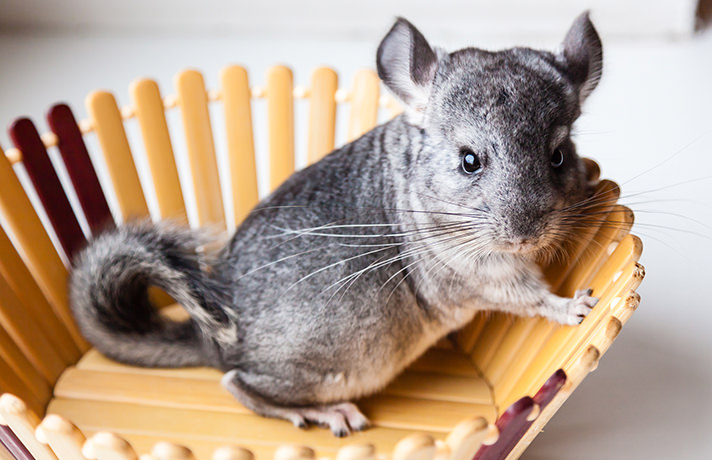Considering all of the unique critters on the planet, which ones are the warmest, cutest, furriest, cuddliest, most entertaining and affectionate pets of all? Well, I suppose if you ask ten different pet owners, you’ll likely get ten different answers. For me, it’s hard to beat the incredible little critter from high up in the Andes Mountains of South America, the chinchilla. And, that’s especially true of the adorable chinchilla baby. Chinchillas as pets were imported, or more likely smuggled into North America nearly a century ago, these adorable dynamos have evolved into one of the world’s most cherished pets.
The name chinchilla means “little chincha”, a name associated with the Chincha people of Peru, a group who relied heavily upon the once abundant rodent populations for both food and fur. Unfortunately, the arrival of Spanish conquistadors in the 16th century ushered in the eventual demise of the larger king chinchilla and the subsequent endangerment of the remainder of the entire wild species, as the chinchilla fur trade offered an irresistible opportunity for wealth.
Thankfully, that group of a dozen or so chinnies, who were discreetly transported to California at the turn of the century, are given credit, by some experts, as having propagated the entire population of North American chinchillas. Sadly, the numbers left behind in South America have struggled for survival and while they may be protected as an endangered species, the populations appear to lack the necessary growth to offer any substantial hope for the immediate future.
The coolest thing about the species, which happens to be the softest and thickest fur of any animal on the planet, is also the one thing that’s contributed to its near extinction. The demands of the fur market, for this high priced pelt, inspired an inexhaustible army of trappers eagerly waging war against the harmless and defenseless ‘little chinchas’. The pursuit of profit, it would seem, has no room for conscience. And, although the demand for all types of fur has diminished worldwide, it’s unlikely that any organized efforts, with regard to any type of wide scale chinchilla rescue, will ever return the number of wild chinchillas to their pre-conquistador levels of the 1600s.
Here in the United States the chinchilla pet industry has evolved into a stable and profitable enterprise, with breeders and pet stores alike, supplying the needs of a demanding base of enthusiastic and loving chinnie owners.
A few chinchilla facts reveal that this little animal weighs in at somewhere between two and three pounds, and appears to be a cross between a rabbit and a squirrel. Reaching a full-grown length of about 12 inches, the typical chinchilla is relatively easy to care for, demanding only reasonably sized chinchilla cages or enclosure and sufficient room to run about in a daily program of physical exercise. Specialized needs include the relatively inexpensive chinchilla wheel, a few chinchilla toys, and the chinchilla bath, more commonly known as chinchilla sand. The required diet, while somewhat specialized, is rather simple and generally not a challenge for the average budget.
Chinchillas are very intelligent, highly energetic and can be extremely affectionate, showing great attachment to the owners they depend on and love. They are also very delicate animals that are easily injured, a potential that demands supervised activity when young children are involved. As a nocturnal animal, the bulk of their activity occurs between sundown and daybreak, however there’s sufficient time in between for you to interact with your comically playful little pet.
For additional information and GREAT resources, please visit the Chinchilla Cage.
Copyright 2010 Walter Tekman. All rights reserved. Please feel free to share the entire contents of this article with your friends or post it on your site as long as it is left intact with all links unchanged, including this notice.












